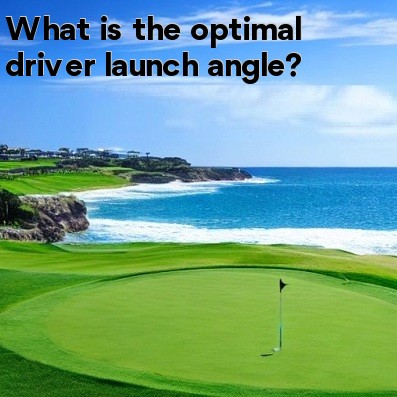
The Optimal Driver Launch Angle in Golf
When it comes to maximizing distance and accuracy off the tee, finding the optimal driver launch angle is crucial for any golfer. The launch angle refers to the angle at which the golf ball takes off from the clubface and into the air. While every golfer is unique and may have slightly different ideal launch angles, there are some general guidelines that can help you find the optimal driver launch angle for your game.
Understanding Launch Angle
The launch angle is determined by the combination of several factors, including clubhead speed, angle of attack, loft of the driver, and ball position at address. These factors work together to determine the trajectory and distance of the ball flight. Achieving the optimal launch angle will result in maximizing both distance and accuracy.
Factors That Affect Launch Angle
1. Clubhead Speed: Generally, higher clubhead speeds tend to benefit from lower launch angles. This is because the increased speed generates enough backspin to keep the ball in the air while reducing the amount of spin loft, which is the difference between the angle of attack and the dynamic loft of the clubface at impact.
2. Angle of Attack: The angle of attack refers to the direction the clubhead is moving in relation to the ground at impact. Golfers with a negative angle of attack (hitting down on the ball) tend to benefit from higher launch angles, as it helps increase the initial launch and reduce the amount of spin generated. On the other hand, golfers with a positive angle of attack (hitting up on the ball) may aim for a slightly lower launch angle to optimize their ball flight.
3. Driver Loft: The loft of the driver also plays a significant role in the launch angle. Typically, drivers have a loft between 8 and 12 degrees, and the higher the degree of loft, the higher the launch angle. Golfers with a slower swing speed may benefit from a higher loft driver to help achieve an optimal launch angle.
4. Ball Position: The position of the ball at address can also affect the launch angle. Placing the ball farther forward in your stance tends to encourage a higher launch angle, while positioning it farther back promotes a lower launch angle. It's important to find the ball position that works best for your swing to ensure optimal launch conditions.
Finding Your Optimal Launch Angle
While the general range for the optimal driver launch angle is between 10 and 15 degrees, it's important to note that individual preferences and swing characteristics can vary. To find your ideal launch angle, it is recommended to work with a qualified golf professional who can analyze your swing and help you determine the optimal combination of clubhead speed, angle of attack, loft, and ball position.
Additionally, launch monitors and trackman devices can provide precise data on launch angles, spin rates, and other crucial parameters to help dial in your optimal launch angle.
Conclusion
Finding the optimal driver launch angle in golf requires taking into account several factors like clubhead speed, angle of attack, driver loft, and ball position. While there is a general range for the ideal launch angle, individual variations exist. By working with a professional and utilizing technology, you can find the launch angle that maximizes your distance and accuracy off the tee, ultimately improving your overall golf game.





